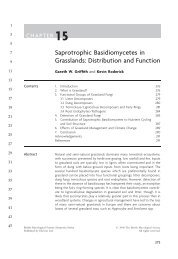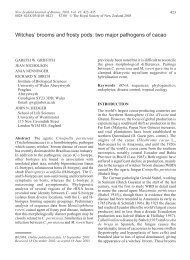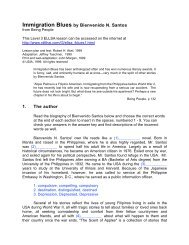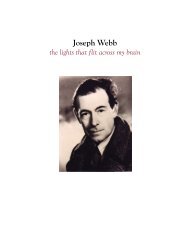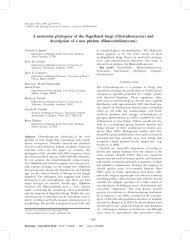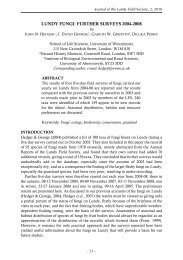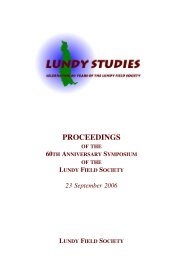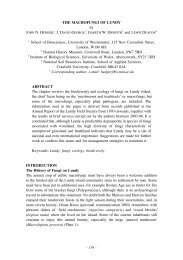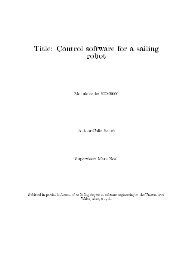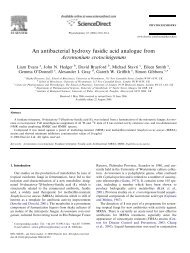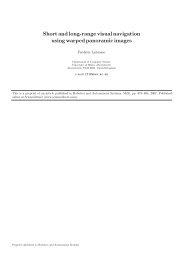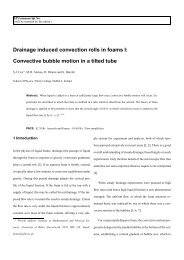Anaerobic rumen fungi
Anaerobic rumen fungi
Anaerobic rumen fungi
You also want an ePaper? Increase the reach of your titles
YUMPU automatically turns print PDFs into web optimized ePapers that Google loves.
Agriculturally Important Microorganisms Vol. II<br />
contribution to the ruminal digestive event. However, the development of direct-fed microbials<br />
for improved <strong>rumen</strong> performance is a pre-requisite for sustainable animal production. Therefore,<br />
a substantial potential exists for the manipulation of fungal population and activity in the <strong>rumen</strong><br />
to benefit even from poor quality herbages.<br />
CONCLUSION<br />
In the lack of efficient feed materials, utilization of high fibrous crop-residues and<br />
agricultural by-products along with the tested animal probiotic could be a better alternative over<br />
the existing feeding practices. With the onset of technology for production and administration of<br />
direct-fed microbials, it seems feasible to effectively utilize the poor quality fibrous feeds for<br />
higher productivity of animals. Since, there is considerable disparity among the fungal isolates<br />
from domestic as well as wild animals in their fibre degrading potential; there is immense scope to<br />
isolate efficient fibrolytic fungal strains with elevated levels of fibrolytic enzymes so that they can<br />
be posted in the <strong>rumen</strong> for optimum feed utilization. Therefore, more work is needed to study the<br />
diversity of these <strong>fungi</strong> among domestic and wild ruminants, and to isolate/ select the elite<br />
strains with high fibrolytic activity which can get established in the <strong>rumen</strong> to facilitate digestion of<br />
low grade roughages for enhanced meat/ milk production, as the case may be.<br />
ACKNOWLEDGEMENTS : The authors, especially AKP and GWG wish to thank Indian National Science<br />
Academy, New Delhi and Royal Society, London for supporting the establishment of long-term relations between<br />
Indian and UK counterpart, by providing financial assistance to the former for a short visit to UK under scientists<br />
exchange programme.<br />
REFERENCES<br />
Akin DE (1987). Association of <strong>rumen</strong> <strong>fungi</strong> with various forage grasses. Anim Feed Sci Tech 16: 273-385.<br />
Akin DE and Benner R (1988). Degradation of polysaccharides and lignin by ruminal bacteria and <strong>fungi</strong>. Appl<br />
Environ Microbiol 54: 1117-1125.<br />
Akin DE and Borneman WS (1990). Role of <strong>rumen</strong> <strong>fungi</strong> in fibre degradation. J Dairy Sci 73: 3023-3032.<br />
Akin DE and Windham WR (1989). Influence of diet on <strong>rumen</strong> <strong>fungi</strong>. In: Nolan JA, Leng RA and Demeyer DL (eds).<br />
The roles of protozoa and <strong>fungi</strong> ruminant digestion. Australia: Armidale, pp 75-81.<br />
Akin DE, Borneman WS and Windham WR (1988). Rumen <strong>fungi</strong>: morphological types from Georgia cattle and the<br />
attack on forage cell walls. Biosystems 21: 385-391.<br />
Akin DE, Gordon GLR and Hogan JP (1983). Rumen bacterial and fungal degradation of Digitaria pentzii grown with<br />
or without sulphur. Appl Environ Microbiol 46: 738-748.<br />
Akin DE, Lyon CE, Windham WR and Rigsby LL (1989). Physical degradation of lignified stem tissues by ruminal<br />
<strong>fungi</strong>. Appl Environ Microbiol 55: 611-616.<br />
Akin DE, Rigsby LL, Lyon CE and Windham WR (1990). Relationship of tissue digestion to textural strength in<br />
Bermuda grass and alfalfa stems. Crop Sci 30: 990-993.<br />
Barichievich EM and Calza RE (1990). Supernatant protein and cellulase activities of the anaerobic ruminal fungus<br />
Neocallimastix frontalis EB188. Appl Environ Microbiol 56: 43-48.<br />
Barr DJS (1980). An outline for the reclassification of the Chytridiomycetales, and for a new order, the<br />
Spizellomycetales. Can J Bot 58: 2380-2394.<br />
Barr DJS (1990). Phylum Chytridiomycota. In: Margulis L, Corliss JO, Melkonian M, Chapman DJ. (eds). Handbook of<br />
Protoctista. Boston: Jones & Bartlett, pp 454–466.<br />
Barr DJS and Desaulniers NL (1988). Precise configuration of organisms of the chytrid zoospore. Can J Bot 66: 869-876.<br />
Barr DJS, Kudo H, Jakober KD and Cheng KJ (1989). Morphology and development of <strong>rumen</strong> <strong>fungi</strong>: Neocallimastix sp,<br />
Piromyces communis, and Orpinomyces bovis gen. nov, sp. nov. Can J Bot 67: 2815-2824.<br />
Bauchop T (1979). Rumen anaerobic <strong>fungi</strong> of sheep and cattle. Appl Environ Microbiol 38: 148-158.<br />
Bauchop T (1983). The gut anaerobic <strong>fungi</strong>: colonizers of dietary fibre. In: Wallace G and Bell L (eds). Fibre in human<br />
and animal nutrition. Wellington: Royal Society of New Zealand, pp 143-148.<br />
386



